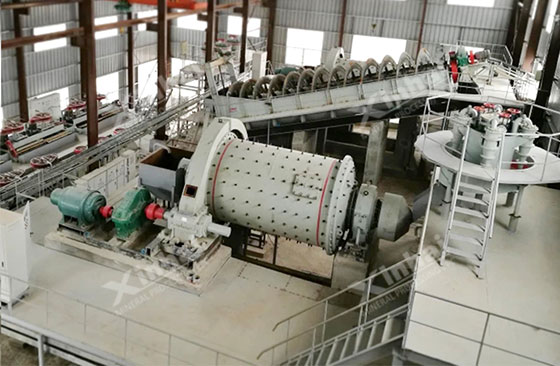

Warm Tip: If you want to know more details about equipment, solutions, etc, please click the button below for free consultation, or leave your requirements!
In this post you're going to know about the important indicators in grinding and classification stage and what influences these indicators.
This post includes 3 important indicators:
grinding fineness
grinding capacity
grinding classification efficiency
So if you want to learn more about grinding and classifaction,you'll love this post.
Let's dive right in!

We usually use standard 200 mesh sieve to screen the fineness of the product and the percentage of the product reaching that fineness in the total, such as grinding fineness -200 mesh accounts for 50% or -0.074mm accounts for 50%, the higher the percentage, the finer the product.
For most ores, the finer the grinding, the more fully the useful minerals are dissociated, which increases the recovery of the useful minerals. Therefore, in general, under certain treatment capacity, grinding fineness will be increased as far as possible. In addition, properly relaxed grinding fineness can reduce the energy consumption and improve the productivity under the premise of ensuring the processing index.
There are many factors that affect the fineness of grinding, including the nature of raw ore, the hardness of ore, the size of crushing particle, the size of feeding amount, the size of water flow at the feeding end and the discharging end of the grinding mill, the concentration of grinding, the filling rate and size ratio of steel balls, the size of the opening of the classifier and the size of sand return ratio, and so on. Some mineral grinding fine over fine easy to produce mud, so grinding fineness is not the finer the better, generally to achieve the majority of useful mineral monomer dissociation fineness can be.
The production capacity of the mill can be subdivided into two parameters, namely the production capacity of the mill and the capacity per unit mill volume.
This parameter refers to the amount of ore processed by the mill per hour, in units of t/(station •h), at a given ore feed and product size.
This parameter is usually expressed by the English letter q and refers to the average value of ore processed by the mill by its effective volume per unit time. The unit is ton /(cubic meter · hour), which is one of the important indexes to measure the work of the mill. In the case that the size of ore and product are similar, the ore properties and operating conditions in the mill can be judged by the index of unit mill volume and processing capacity. By increasing the capacity per unit, the production capacity of the mill can be improved effectively.
The influencing factors of these two parameters mainly include: the feeding nature of the feed mill, the particle size requirements of the product, the type and model of the mill, the speed of the mill, the medium, the filling rate and so on. To increase the output of grinding machine, we can reduce the grain size of the grinding machine and remove the surrounding rock and rock in advance. That is to improve the quality of the ore, improve the grindability of the ore, increase the grinding amount, and reduce the energy consumption while increasing the output of the grinding mill.
The efficiency in the grinding and classification stage mainly refers to the grinding efficiency, that is, the amount of ore processed by electric energy per kilowatt · hour consumed, also known as the unit productivity of the mill. Specifically speaking, it is the ton of the specified level (usually 200 mesh) products obtained by the energy consumption of 1 kilowatt · hour. The unit power consumption productivity can reflect the working condition of the mill from the energy consumption in a more real way, so it is often used for calculation and selection in the design.
The factors that affect the grinding efficiency include: the proportion of steel balls added for the first time, the quality of the steel balls, the way of adding the steel balls, the filling rate of the steel balls, the grinding concentration, the ratio of backsand and the efficiency of the classifier, the effect of grinding aid and so on.
At the beginning of the construction of the concentrator, the determination of the three indicators should be based on the test and design, it is suggested to consult with the manufacturers who can independently produce the concentrator equipment and have the design qualification of the concentrator, so that the equipment and indicators in the grinding classification stage can be compatible with each other and reduce the indicator error after the production.
In actual production, according to the above three indicators will grinding and classification stage production running condition for effective judgment, for the operator of the grinding classification stage, should know how to use the three process indicators to determine the effect of grinding classification stage, and through the abnormal index screening problem, find out the factors influencing indicators, guaranteeing the smooth running of the concentrator.
Last: Do You Understand The Grinding And Classifying Process In Mineral Processing Plant?
1Some Questions about Grinding and Classification Stage
 3
3
 4444
4444
24 Types of Crushing Plant
 0
0
 4509
4509
33 Important Indicators In Grinding And Classification Stage
 0
0
 3518
3518


What Are the Differences Between CIP and CIL?
 11231
11231
 0
0